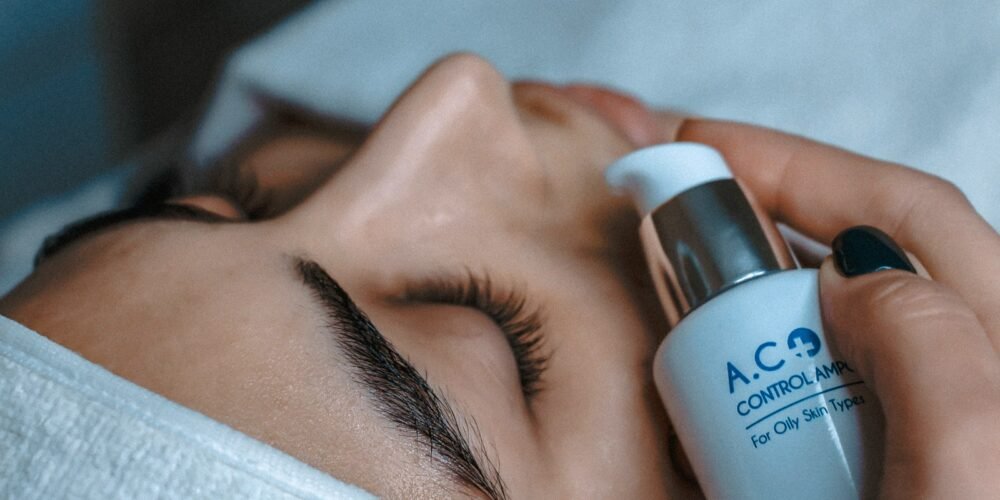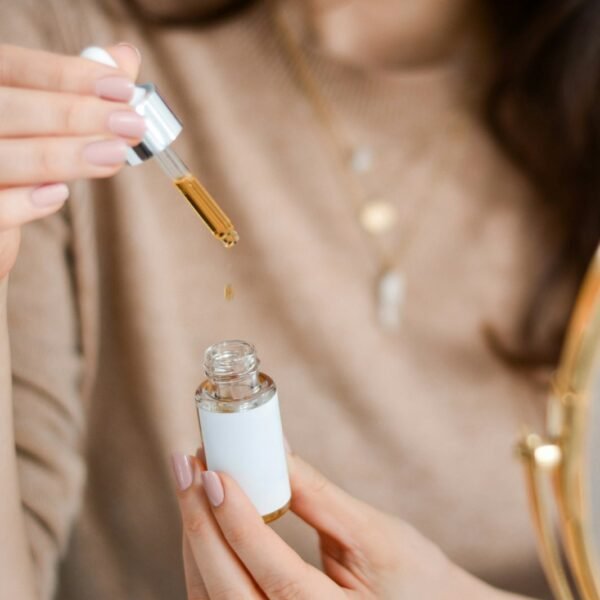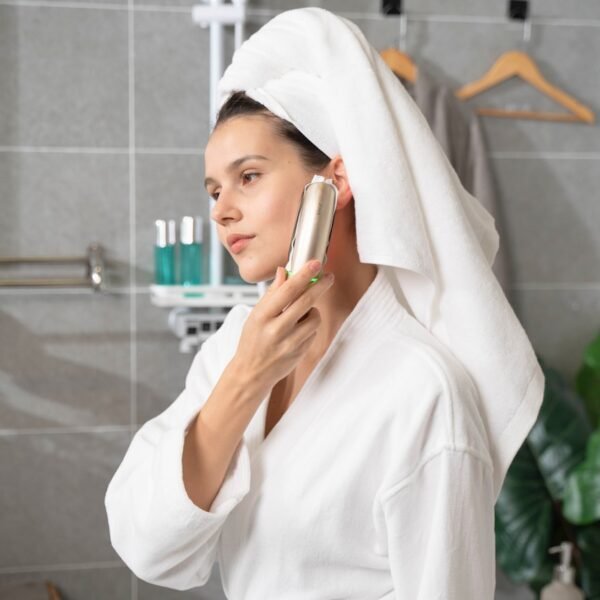Ever wondered if it’s too early or too late to start using retinol? Trust me, you’re not alone. I remember standing in the skincare aisle, staring at all the retinol products, and thinking, “When should one start using retinol?” It’s a common question, and the confusion is real.
In this post, we’ll explore exactly when you should start using retinol in your skincare routine. Whether you’re in your 20s and looking to prevent those first signs of aging, or a bit older and ready to tackle some fine lines and wrinkles, I’ve got you covered.
Let’s dive into the what, when, and how of retinol to help you make the best decision for your skin.
What is Retinol And What are the Benefits?
Let’s start with the basics: what exactly is retinol? Retinol is a derivative of vitamin A, and it’s known for its incredible benefits for the skin. This powerhouse ingredient works to rejuvenate your skin from the inside out, giving you that healthy, glowing complexion we all strive for.
Here are some of the benefits of retinol:
- Boosts Collagen Production: Helps to firm the skin, reducing the appearance of fine lines and wrinkles.
- Speeds Up Cell Turnover: Promotes the shedding of old skin cells and the growth of new ones, leading to a smoother and more radiant complexion.
- Fights Acne: Clears up existing acne and prevents future breakouts by unclogging pores.
- Reduces Hyperpigmentation: Fades dark spots and evens out skin tone, giving you a more uniform complexion.
- Improves Skin Texture: Softens rough patches and leaves your skin feeling silky smooth.
- Minimizes Pore Size: Tightens pores, making them appear smaller and less noticeable.
- Enhances Skin Elasticity: Helps maintain skin elasticity, preventing sagging and promoting a youthful appearance.
So, why is retinol so popular? The answer is simple. Retinol is loved for its powerful anti-aging and acne-fighting properties. It’s like having a multi-tasking skincare hero in your routine.
With benefits like these, it’s no wonder that retinol has become a staple in so many skincare routines.
Whether you’re aiming for smoother skin, fewer breakouts, or a more youthful appearance, retinol has got you covered. But before you rush to add it to your skincare arsenal, let’s dive into when you should start using retinol.

When to Start Using Retinol
Now that we know what retinol is and its amazing benefits, the next question is, “When should you start using retinol?” This can vary based on age and individual skin concerns, so let’s break it down.
Age Considerations
Dermatologists often recommend starting retinol in your mid to late 20s. This is when the first signs of aging, like fine lines and subtle wrinkles, start to make an appearance.
Introducing retinol at this stage can help address these early signs and keep your skin looking youthful and radiant for longer.
Skin Concerns
However, age isn’t the only factor to consider. Specific skin concerns might prompt you to start using retinol earlier or later:
- Acne: If you’re struggling with acne, retinol can be a game-changer. Its ability to unclog pores and speed up cell turnover makes it highly effective in clearing up breakouts and preventing future ones. Teens and young adults with persistent acne may benefit from incorporating retinol into their skincare routine under the guidance of a dermatologist.
- Sun Damage: Early signs of sun damage, like dark spots and uneven skin tone, can also be a reason to start using retinol sooner. Retinol helps to fade these spots and promote a more even complexion.
- Sensitive Skin: If you have particularly sensitive skin, you might want to introduce retinol more gradually or wait until your skin can tolerate it better. Starting with a lower concentration and slowly increasing it can help your skin adjust without irritation.
So, whether you’re in your mid-20s and looking to prevent aging, or dealing with acne and sun damage, knowing when to start using retinol can set you on the right path to achieving your skincare goals.
How to Introduce Retinol
Alright, so you’ve decided it’s time to add retinol to your skincare routine. Great choice! But before you dive in headfirst, it’s crucial to introduce it gradually to give your skin the best chance to adjust without irritation.
Starting Slowly
Begin with a lower concentration of retinol, such as 0.25%. This lower strength is perfect for allowing your skin to ease into the ingredient.
Jumping straight into higher concentrations might overwhelm your skin, leading to dryness, redness, or peeling.
By starting with a milder formula, you can minimize the risk of irritation and build up your skin’s tolerance over time.
Frequency
When it comes to how often to use retinol initially, start by applying it just once a week. This allows your skin to acclimate to the new ingredient without becoming too sensitive.
As your skin becomes accustomed to retinol and starts to tolerate it better, you can gradually increase the frequency. Aim to use it every other night or as recommended by your dermatologist.
It’s also a good idea to apply retinol in the evening, as it can make your skin more sensitive to sunlight. Always follow up with a broad-spectrum sunscreen during the day to protect your skin from UV damage.
By starting slowly and increasing usage gradually, you help ensure a smoother introduction to retinol and achieve the best possible results. Don’t make the mistake I did when I desperately wanted to see results and used it every night at the beginning, it wrecked my skin.
Remember, consistency is key, and patience will pay off as you work towards a glowing healthy skin.
Potential Side Effects and How to Manage Them
As you embark on your journey with retinol, it’s good to be aware of some potential side effects. While retinol is a fantastic ingredient for your skin, it can sometimes come with a few bumps along the road. Here’s what you might experience and how to handle it.
Common Side Effects
When you first start using retinol, it’s not unusual to encounter dryness, redness, and peeling. These effects happen because retinol speeds up cell turnover, which can initially disrupt your skin’s barrier.
While these side effects are generally temporary, they can be uncomfortable and might make you second-guess your new routine.
Management Tips
To help ease these side effects and keep your skin comfortable, consider these tips:
- Moisturize Regularly: Keep your skin well-hydrated with a rich, soothing moisturizer. Look for ingredients like hyaluronic acid or ceramides that help maintain your skin’s moisture barrier and reduce dryness.
- Use Sunscreen: Retinol can increase your skin’s sensitivity to sunlight. Protect your skin by applying a broad-spectrum sunscreen with at least SPF 30 every morning. This will help prevent sun damage and further irritation.
- Consider the Sandwich Method: This technique involves applying a hydrating product both before and after your retinol application. Start by applying a hydrating serum or moisturizer, then apply your retinol, and finish with another layer of moisturizer. This “sandwich” approach helps buffer the retinol and can minimize irritation while still allowing you to benefit from its effects.
- Start Slowly: Introduce retinol into your routine gradually. Begin with a lower concentration and use it just once or twice a week. As your skin adjusts, you can slowly increase the frequency. If you experience significant discomfort, reduce usage until your skin adapts, and then build up slowly.
By following these tips and giving your skin some time to adjust, you can manage retinol’s side effects more effectively and enjoy its many benefits with fewer interruptions.
Remember, patience is key to achieving that radiant, youthful glow!

My Personal Experience with Retinol
Let me share a bit about my own journey with Retinol, which was quite the rollercoaster ride. When I first dove into using retinol, I was, to be honest, pretty clueless about how to incorporate it into my routine properly.
My eagerness to see quick results led me to apply it daily right from the start, and let’s just say my skin had other plans!
Initially, I faced extreme irritation—my face erupted into little bumps, particularly on my forehead. It was incredibly frustrating and stressful to see my skin reacting so poorly.
I was desperate to minimize my pores and boost my skin’s texture, but my approach was too aggressive. Instead of achieving clearer skin, I ended up compromising my skin barrier. It was a tough lesson in how not to use retinol.
After that rough experience, I must admit, Retinol was scary for me. However, I’ve since built up some courage to revisit it. With pregnancy and breastfeeding periods, I had to hold off on retinol, but I’m excited to give it another try.
I’ve seen so many impressive results from others who use it correctly, and I’m looking forward to incorporating it back into my routine when the time is right.
My experience taught me the importance of patience and proper usage. If you’re new to retinol, learn from my journey and start slowly, listen to your skin, and don’t be discouraged by initial setbacks.
With the right approach, you’ll be on your way to reaping the benefits of this powerhouse ingredient.
Conclusion
In summary, retinol holds the potential to be a transformative addition to your skincare routine, offering benefits from fighting early signs of aging to tackling acne and uneven skin tone.
However, to make the most of its advantages, it’s crucial to start at the right time and use it with a careful approach. Begin with a lower concentration, introduce it gradually, and listen to your skin’s responses to ensure a smooth transition.
Always remember, that consulting with a dermatologist can provide personalized guidance tailored to your skin type and concerns. They can help you create a retinol routine that aligns with your skincare goals and minimizes potential side effects.
Have you embarked on your retinol journey? I’d love to hear about your experiences or any questions you might have. Share your thoughts in the comments below, and let’s continue this skincare conversation together!





Leave a Reply